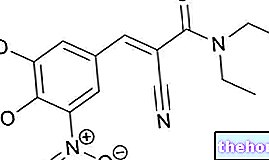Bile acid sequestering resins are drugs used to reduce blood cholesterol levels. Minor therapeutic applications concern:
- the prevention of itching in patients suffering from liver disease accompanied by cholestasis, such as cirrhosis → increased levels of bile acids in the blood → deposition of the same in the skin → onset of itching. Bile acid sequestering resins are able to reduce the levels of bile acids in the blood, thus preventing (but not treating, according to a recent study) the itching associated with their skin deposit
- prevention of diarrhea due to malabsorption of bile acids → typical of patients suffering from conditions that compromise the absorption capacity of the same in the ileum (terminal tract of the small intestine): inflammatory processes (eg. Crohn's disease), bacterial contamination of the small intestine, surgical resection of the ileum, congenital anatomical alterations of the small intestine, removal of the gallbladder, functional disorders of the ileum, celiac disease, chronic pancreatitis
- adjuvant therapy in the treatment of hyperthyroidism → the resins sequestering bile acids have been shown to reduce the levels of thyroxine in the blood, inhibiting the enterohepatic circulation of the hormone and favoring its fecal excretion
- adjuvant therapy in the treatment of infections by Clostridium difficile, thanks to the ability to adsorb toxins A and B of the bacterium, favoring their fecal elimination and preventing damage to the colon mucosa.
The therapeutic effect of bile acid sequestering resins exploits some of the simplest laws of chemistry. These drugs are polymeric macromolecules (consequently they cannot be absorbed by the gastrointestinal tract) which on their surface expose negatively charged ions (anions, eg. Cl-), available for ion exchange. In this way, once in the intestine, these resins are able to exchange their chloride anions with other anions of bile acids, sequestrating them and preventing their absorption.
- The resins act by binding to themselves the bile acids poured into the intestine through the bile produced by the liver and concentrated by the gallbladder. In this way they prevent its reabsorption by increasing its fecal excretion.
Among the resins sequestering bile acids the following drugs are mentioned:
- Cholestyramine (Questran)
- Colestipol (Colestid)
- Colesevelam (Cholestagel)
Resins sequestering bile acids and high cholesterol
The synthesis of bile acids in the liver occurs starting from the cholesterol molecule, subject to a series of enzymatic reactions and conjugations with amino acids, such as glycine and taurine. Once poured into the intestine through the bile, thanks to the enzymatic action of the intestinal flora, the bile acids undergo reactions in some ways opposite to those of synthesis. In this way they can be reabsorbed by the intestine, in a percentage that normally is between 94 and 98%. The amount of bile acids eliminated with the faeces is therefore very modest, but increases significantly when the patient takes a sequestering resin. bile acids. In this way the ex-novo synthesis of the same in the liver is stimulated, which as we have seen determines the consumption of cholesterol, subtracted from the liver deposits and from the plasma: to fulfill the increased demand, the liver raises the expression of its own receptors for LDL (bad cholesterol), decreasing the values of total and LDL cholesterolemia.
- Cholestyramine, at a dose of 12-14 g / day produces a cholesterol-lowering effect that can be quantified in a 25-35% reduction in total blood cholesterol levels, and approximately 20-25% of LDL cholesterol. HDL cholesterol rises slightly or remains unchanged, while triglycerides rise slightly, especially in patients with hypertriglyceridemia.
The use of bile acid sequestering resins in monotherapy to reduce high cholesterol has been severely limited by the clinical introduction of the more effective statins. Today, their use is mostly reserved for patients who do not tolerate the association of statins and fibrates (increased risk of rhabdomyolysis):
- as a replacement for fibrates to enhance the hypo-cholesterol-lowering activity of statins in patients with hypercholesterolemia
- or to replace statins in patients with hypertriglyceridemia and hypercholesterolemia.
Side effects of bile acid sequestering resins
Not being absorbed from the intestine, the resins sequestering bile acids do not produce systemic side effects, but only local ones. At high doses, binding to themselves:
part of the fat-soluble vitamins → can produce specific vitamin deficiencies;
fatty acids and other nutrients → they can produce symptoms of malabsorption: nausea, heartburn, flatulence, bloating, abdominal pain, constipation, steatorrhea.
some drugs (digitalis, chlorothiazide, tetracyclines, warfarin, iron salts, thyroxine, phenylbutazone and phenobarbital) → can reduce plasma concentrations and their therapeutic effect (activity that becomes therapeutic in the presence of overdose intoxication).
The side effects of the resins sequestering bile acids occur mainly in the first period, and then diminish with the continuation of the therapy. For this reason, the drug is generally administered in low doses (e.g. 4 grams for cholestyramine), to then reach the average dose of 12-16 g / day in weekly increments, up to a maximum of 24 g / day, in 2-4 administrations half an hour after meals or immediately before them. A diet rich in fiber can relieve constipation and bloating.
Not being absorbed by the intestine, the resins sequestering bile acids have no particular contraindications for use in pregnancy, which must take place according to medical indications after evaluating the benefit / risk ratio for the mother and the fetus (deriving from the possible lack of fat-soluble vitamins, bridgeable through the use of specific supplements).




























